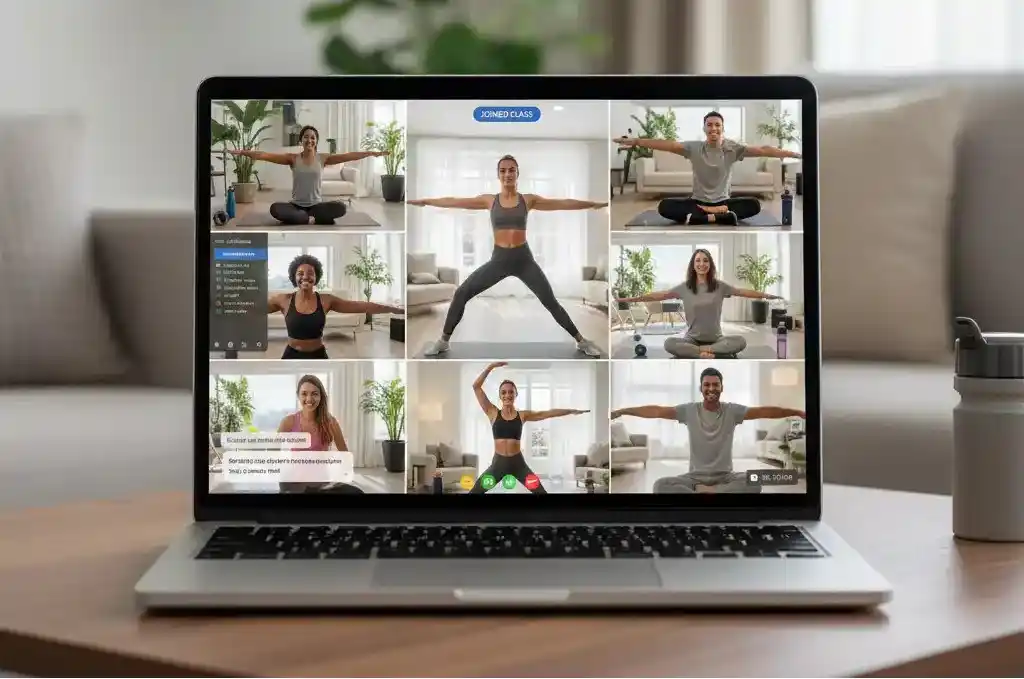Emerging Tech Trends Shaping the Future of Sports and Fitness Software

AI Generated Image : Gemini
Table of Contents
- Personalized Monitoring with Wearables
- Data-Driven Workouts and Predictive Insights
- Hybrid and On-Demand Fitness
- Virtual Reality and Gamified Training
- Supply Chain of Fitness Products
- Security and Data Protection
- The Role of Flexible Development Teams
- Preparing for the Future
- Conclusion
The sports and fitness industry is in the middle of a major shift. People want more personalized, flexible, and engaging ways to stay healthy. From gyms to sports teams, technology is helping them achieve this. Sports and fitness software trends show how digital tools are changing the way workouts are delivered, tracked, and optimized. Software has become the bridge that connects training, data, and user experience.
This blog looks at the most important technology trends changing sports and fitness today. It also highlights how businesses can prepare for the future with the right digital solutions.
Personalized Monitoring with Wearables
Wearables are now part of daily life for athletes and fitness fans. Smartwatches, fitness bands, and even smart clothing record data such as heart rate, calories burned, and recovery time. This gives users real-time insights into their progress.
The real value lies in how this data is used. Trainers and gyms can create tailored workout plans. Sports teams can track athlete health to prevent injuries. This makes training safer and more effective.
Key benefits:
- Motivation to stay active
- Clear progress tracking
- Early warning for injuries
Data-Driven Workouts and Predictive Insights
Collecting data is useful, but analyzing it is even more powerful. Predictive tools use past and present data to give clear insights into performance. For example, a system can flag if an athlete is at risk of overtraining.
Gyms and coaches also use data dashboards to see patterns. They can identify which classes are most popular, when users are most active, or which workouts bring the best results.
Examples in action:
- Athletes can get personalized rest and recovery plans.
- Fitness centers can plan schedules based on attendance patterns.
- Teams can reduce injuries with early detection tools.
Hybrid and On-Demand Fitness
The rise of online classes during the pandemic has not slowed down. Hybrid models now combine in-person and online fitness. Users expect to switch between gym sessions and at-home workouts with ease.
On-demand fitness apps offer video classes, live streams, and even one-on-one training. The result is a more flexible way to stay fit, which appeals to busy professionals and younger audiences.
Why it works:
- Flexibility for users to train anywhere
- Lower costs than full-time personal training
- Access to a wider variety of programs
Custom AI Software Development Solution For Enterprises
Virtual Reality and Gamified Training
Training can feel repetitive. Virtual reality and gamification are changing that. By turning workouts into immersive experiences, fitness becomes more engaging.
Examples include VR cycling in a virtual city or gamified running challenges with friends. These experiences encourage consistency because they are fun and competitive.
Impact:
- Keeps users motivated
- Builds communities around fitness
- Helps younger audiences connect with health goals
Supply Chain of Fitness Products
Behind every fitness program are products: equipment, wearables, supplements, and more. Technology now manages the supply chain for these businesses. With demand forecasting, gyms and retailers know what items to stock and when. This prevents waste and ensures customers get what they need.
This is where AI SaaS Products play a big role. By using cloud-based systems, gyms and sports companies can forecast demand and manage stock in real time. It makes operations smoother and keeps customers happy.
Security and Data Protection
Sports and fitness software often handles sensitive health data. Protecting this information is critical. Strong security and compliance with health data rules build trust.
Best practices include:
- Secure coding and data encryption
- Regular system checks for vulnerabilities
- Compliance with rules like HIPAA and GDPR
When users feel their data is safe, they are more likely to engage with digital platforms.
The Role of Flexible Development Teams
Building reliable software for sports and fitness requires both technical skill and business understanding. Many companies face skill gaps or tight deadlines. As sports and fitness software trends continue to evolve, this is where Contract Software Developers provide value.
Instead of hiring large in-house teams, organizations can bring in skilled developers for specific projects. They provide the right expertise at the right time. This model reduces cost, speeds up delivery, and ensures high-quality results.
Benefits of contract developers for sports and fitness:
- Access to specialized skills in AI, mobile, and cloud
- Faster turnaround for app launches
- Flexibility to scale teams based on project needs
Preparing for the Future
The sports and fitness industry will continue to evolve. Success will depend on using technology that meets both user and business needs.
Steps for companies to take:
- Invest in systems that analyze data and give actionable insights.
- Combine hybrid models with personalized experiences.
- Keep data security and compliance at the center of software design.
- Use AI SaaS Products to manage operations and improve customer experience.
- Partner with Contract Software Developers to scale projects faster.
Conclusion
The future of sports and fitness will be more connected, more personalized, and more data-driven. From wearable devices to AI-driven insights, sports and fitness software trends are reshaping how people train and how organizations operate.
Software is the key to this transformation. With the right tools and the right development partners, businesses can create solutions that help users achieve their goals while staying competitive in a fast-changing market.
For companies ready to take the next step, the path forward is clear: embrace digital innovation, build flexible systems, and always keep user experience at the core.









